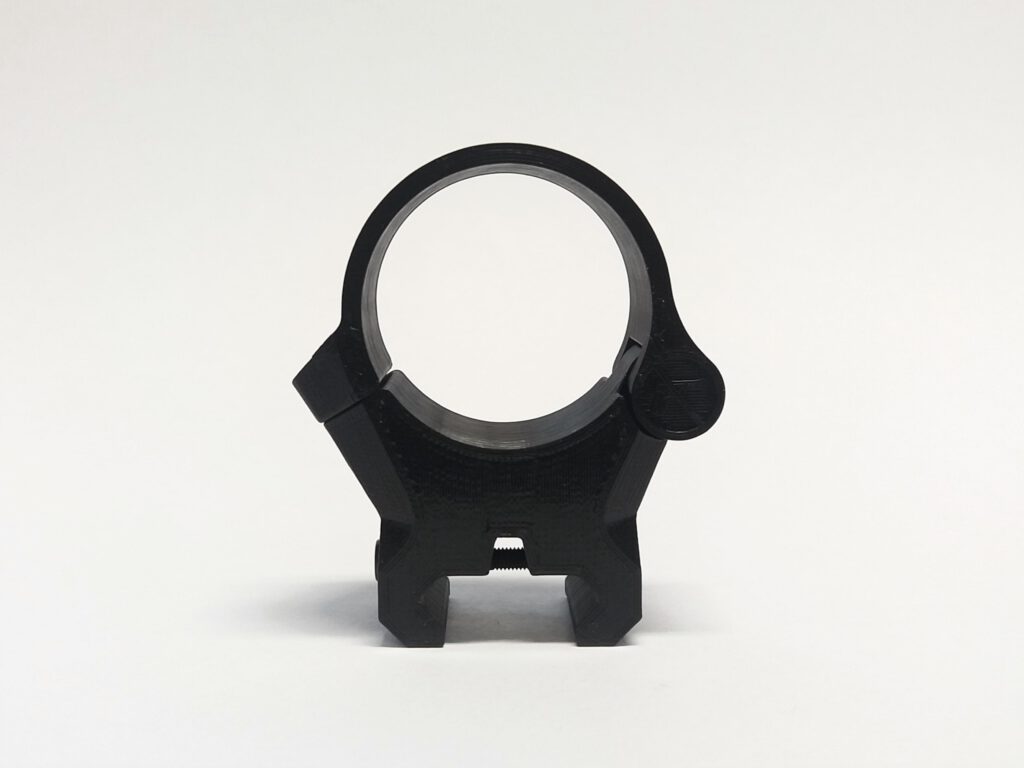Prototypes of rubber eyecups. Prototypes of lens trays. Mounts on riflescopes.
Meopta is an international company with a long rich tradition of developing, manufacturing and assembling world class optical, opto-mechanical and optoelectronic products. By implementation of additive technology, engineers and designers of Meopta can save costs, streamline the production and simplify the work of their colleagues.
Meopta uses 3D printing technology and filaments Flexfill TPU 98A for prototyping of its rubber eyecups, which are a part of binoculars for sports optics. Due to additive manufacturing the company can test different variations of shapes and after an approval of the most suitable and yet functional shape, the eyecups are made in traditional way of casting method.

Presentation material of Meopta also includes wooden stock to which the riflescopes are mounted. 3D printing is used here as a possible solution for the production of mounts for clamping riflescopes to the stock. These riflescopes are presented at exhibitions and fairs around the world, where the customers have the opportunity to test the clamping of Meopta riflescopes. Interesting is that the entire assembly is printed at the same time with all mechanical elements, which would be impossible without 3D printing.

Meopta uses PLA Extrafill for printing of mounts for riflescopes for presentation purposes
Another case study focused on usage of PLA Extrafill is an application for the production of special form prototypes for the handling and storage of various lens shapes. With the printed model the developers and designers can test whether the lens fit well into the container and can be easily removed from the container. If not, specific changes can be made immediately, and the embossing printed again within several hours. Once a suitable shape has been found, a metal mold is formed which, due to its shape, is very expensive. In this way Meopta minimizes production of wrong shapes of the expensive form.

| Cookie | Description |
|---|---|
| _dc_gtm_UA-189275971-1 | The functionality is to store number of service requests. |
| _ga | This cookie is installed by Google Analytics. The cookie is used to calculate visitor, session, campaign data and keep track of site usage for the site's analytics report. The cookies store information anonymously and assigns a randomly generated number to identify unique visitors. |
| _ga_L703XWXLV0 | This cookie is installed by Google Analytics. |
| _gat_gtag_UA_189275971_1 | Set by Google to distinguish users. |
| _gid | Installed by Google Analytics, _gid cookie stores information on how visitors use a website, while also creating an analytics report of the website's performance. Some of the data that are collected include the number of visitors, their source, and the pages they visit anonymously. |
| CONSENT | YouTube sets this cookie via embedded youtube-videos and registers anonymous statistical data. |
| Cookie | Duration | Description |
|---|---|---|
| VISITOR_INFO1_LIVE | 5 months 27 days | A cookie set by YouTube to measure bandwidth that determines whether the user gets the new or old player interface. |
| YSC | session | YSC cookie is set by Youtube and is used to track the views of embedded videos on Youtube pages. |
| yt-remote-connected-devices | never | YouTube sets this cookie to store the video preferences of the user using embedded YouTube video. |
| yt-remote-device-id | never | YouTube sets this cookie to store the video preferences of the user using embedded YouTube video. |
| yt.innertube::nextId | never | This cookie, set by YouTube, registers a unique ID to store data on what videos from YouTube the user has seen. |
| yt.innertube::requests | never | This cookie, set by YouTube, registers a unique ID to store data on what videos from YouTube the user has seen. |